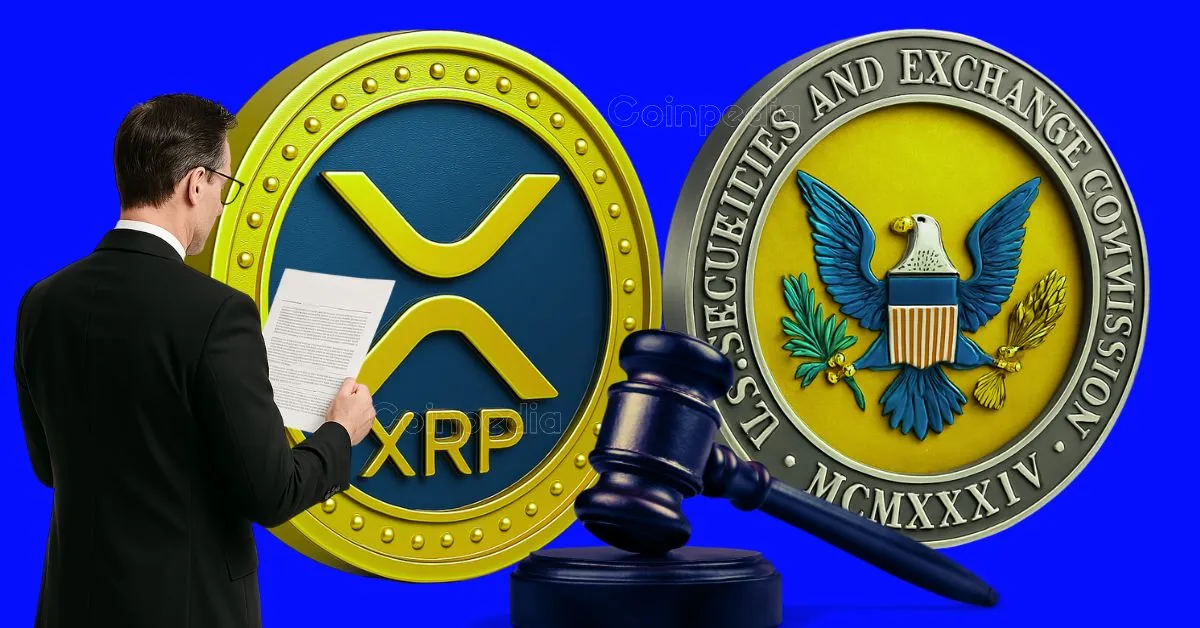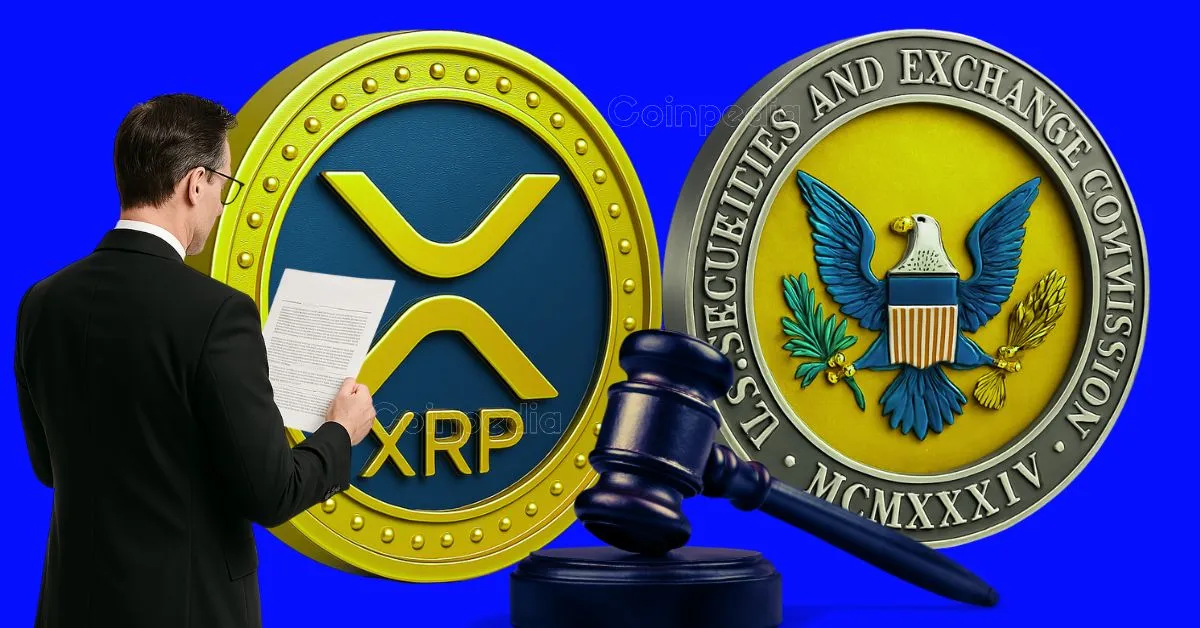The Ripple-SEC legal battle has been a defining saga in the cryptocurrency world, shaping regulatory frameworks and investor sentiment alike. The recent denial of a joint settlement motion by Judge Analisa Torres has extended the timeline of this high-stakes case, leaving Ripple, the SEC, and the broader crypto industry in a state of uncertainty. This article explores the implications of the court’s decision, the reasons behind the denial, and the potential paths forward for all parties involved.
The Ripple-SEC Legal Battle: A Brief Recap
The legal conflict between Ripple Labs and the U.S. Securities and Exchange Commission (SEC) began in December 2020, when the SEC accused Ripple of conducting an unregistered securities offering through institutional sales of XRP totaling $1.3 billion. The case has since become a focal point for regulatory ambiguity in the cryptocurrency space. In July 2023, Ripple secured a partial victory when the court ruled that only direct institutional sales of XRP constituted securities offerings, distinguishing Ripple’s conduct from more clear-cut violations.
Despite this partial win, Ripple still faced a substantial financial penalty of $125 million for the institutional sales. The recent joint motion by Ripple and the SEC aimed to reduce this penalty to $50 million and lift the permanent injunction restricting XRP sales. However, Judge Torres’ denial of this motion has dashed hopes for a swift resolution, prolonging the legal battle and its implications for the crypto industry.
Why the Judge Denied the Joint Motion
Judge Torres’ decision to reject the joint motion was rooted in several key factors, each highlighting the complexities of the case and the broader implications for regulatory clarity.
Procedural Impropriety
One of the primary reasons for the denial was the procedural impropriety of the joint motion. Judge Torres emphasized that the motion was not in line with standard legal procedures. The request for an indicative ruling—a formal hint from the judge that she would accept a settlement if an appeals court sent the case back—was deemed inappropriate. Indicative rulings are typically reserved for new evidence or extraordinary circumstances, not for private settlements that override prior public judgments. This procedural misstep underscored the need for adherence to established legal processes, even in high-profile cases.
Jurisdictional Limitations
The case’s current status in the 2nd Circuit Court of Appeals further complicated the judge’s decision. Until the appeals court sends the case back to her, Judge Torres is limited in what she can rule on. She highlighted this lack of jurisdiction, making it clear that federal courts are not mere rubber stamps for parties seeking to smooth over messy outcomes. This jurisdictional constraint underscores the importance of following proper legal channels, even when both parties are eager to resolve the matter.
Public Interest and Precedent
The outcome of the Ripple-SEC case extends beyond the two parties involved, affecting investors, the legality of digital assets, and setting a precedent for the entire cryptocurrency industry. Judge Torres noted that private arrangements between litigants cannot erase the responsibility courts have to ensure fairness, consistency, and clarity in the law. This emphasis on public interest and precedent highlights the broader implications of the case, reinforcing the need for transparent and equitable legal processes.
Consequences for Ripple, the SEC, and XRP
The denial of the joint motion has significant consequences for Ripple, the SEC, and the broader crypto market, particularly for XRP.
Ripple’s Legal and Business Challenges
Ripple must continue to contend with the $125 million civil penalty, at least for now. The company’s efforts to lift the permanent injunction restricting institutional sales of XRP have failed, leaving it in a precarious position. The ongoing litigation cloud hovers over Ripple, affecting business planning, strategic partnerships, and product launches. The company must navigate a restricted sales environment, limiting its growth prospects in the U.S. and creating uncertainty for investors and partners alike.
The SEC’s Regulatory Strategy
For the SEC, the denial of the joint motion signals a setback in its regulatory strategy. The agency’s attempt to settle the case and move on has been thwarted, forcing it to continue the appeal process—a costly, slow, and public endeavor. The SEC must now rethink its approach to crypto regulation, balancing enforcement actions with the need for regulatory clarity. The agency’s strategy will likely influence future cases involving other cryptocurrency projects, shaping the regulatory landscape for years to come.
XRP’s Market Sentiment and Price Volatility
The denial of the joint motion has had an immediate impact on XRP’s price and market sentiment. Traders who had been anticipating a bullish resolution and renewed clarity for XRP’s legal status have been left disappointed. The continued uncertainty surrounding the case has contributed to volatility in XRP’s price, as investors remain at the mercy of a lawsuit that shows no signs of resolution in the near future. This volatility underscores the interconnectedness of legal outcomes and market dynamics in the cryptocurrency space.
The Path Forward: New Timelines and Potential Resolutions
With the denial of the joint motion, the Ripple-SEC case enters a new phase, marked by extended timelines and potential new strategies for resolution.
The Appeal Process
The appeal process now takes center stage, with both parties required to submit a status report in August indicating whether they will press ahead or seek an alternative path. If the appeal proceeds, the case could stretch into 2027, prolonging the uncertainty for all parties involved. The appellate court’s decision could affirm, reverse, or remand the case, adding new layers of complexity to an already intricate legal battle.
Potential for New Settlement Attempts
Legal experts speculate that fresh settlement attempts are not off the table. If one party blinks—or if higher courts signal openness—Ripple and the SEC could attempt a more carefully structured settlement, this time adhering to proper procedural channels. This approach would require patience and strategic negotiation, but it could offer a path to resolution that respects the legal process.
XRP’s Institutional Sales Restrictions
The injunction on institutional sales of XRP remains in place, limiting Ripple’s ability to engage with institutional investors. This restriction has a chilling effect on market-making activities, keeping both institutional and retail players in a state of uncertainty. Ripple must navigate this restricted environment while exploring alternative strategies to grow its business and expand its market reach.
Broader Implications for the Crypto Industry
The Ripple-SEC case has broader implications for the crypto industry, influencing ongoing cases and regulatory frameworks. Other high-profile cases, such as those involving Coinbase and Binance, will feel the echoes of this legal battle. The case underscores the need for regulatory clarity and the challenges of fitting new technologies into old legal frameworks. The crypto industry and its regulators must work together to create a more predictable and equitable regulatory environment.
Potential Next Steps for Ripple and the SEC
In light of the judge’s decision, Ripple and the SEC have several potential paths forward, each with its own set of challenges and opportunities.
Continuing the Appeal Process
One option is to let the appeal process unfold, accepting the extended timeline and uncertainty that comes with it. The appellate court’s decision could provide clarity and resolution, but it could also introduce new complexities. Both parties must weigh the risks and benefits of continuing the appeal, considering the potential outcomes and their implications for the broader crypto industry.
Crafting a Clean Settlement
Another option is to craft a new settlement that adheres to proper legal procedures. This approach would require careful negotiation and strategic planning, but it could offer a path to resolution that respects the legal process. Both parties must be willing to compromise and find common ground, ensuring that the settlement is fair and transparent.
Seeking Legislative Clarity
Both Ripple and the SEC might quietly hope for legislative clarity, with Congress intervening to clarify crypto asset classifications. This approach would require collaboration between the industry and regulators, as well as a willingness to engage in constructive dialogue. Legislative clarity could help resolve the ambiguity surrounding digital assets and provide a more predictable regulatory environment.
Awaiting Market Response
Ripple may adjust its business model to fit the new normal, hoping for regulatory reform while navigating the current legal landscape. The SEC will continue to monitor the case’s impact on its enforcement agenda, adapting its strategy as needed. Both parties must remain agile and responsive, ready to adapt to changing circumstances and market dynamics.
Conclusion: The Unfinished Story of Crypto Regulation
The Ripple-SEC case is more than just a legal battle over penalties; it represents the struggle to fit new technologies into old legal frameworks. Judge Torres’ decision reaffirms that private deals cannot skip the hard work of justice, emphasizing the need for precedent and public interest. For Ripple, the SEC, and the broader crypto industry, this means months—or even years—of legal maneuvering, posturing, and uncertainty.
The path to regulatory clarity for digital assets remains winding and bumpy. Settlements will not always save the day, and every failed shortcut points to one truth: The crypto industry and its regulators are still writing the first draft of this legal story. Will the law catch up before the code runs ahead? That remains the biggest cliffhanger. And for XRP holders, crypto lawyers, and believers in blockchain’s future, it means staying tuned—because this case shows no signs of closing the book just yet.












